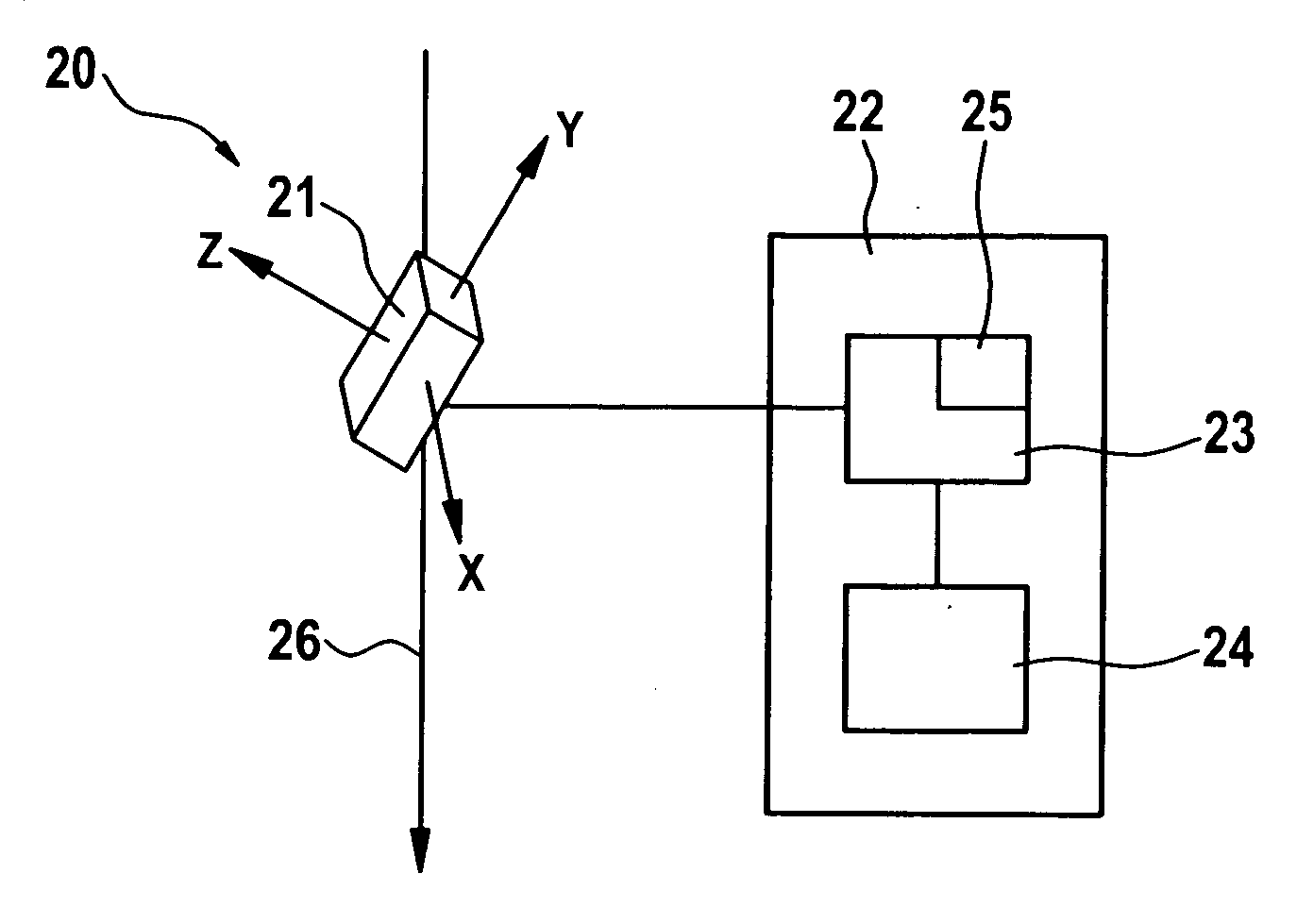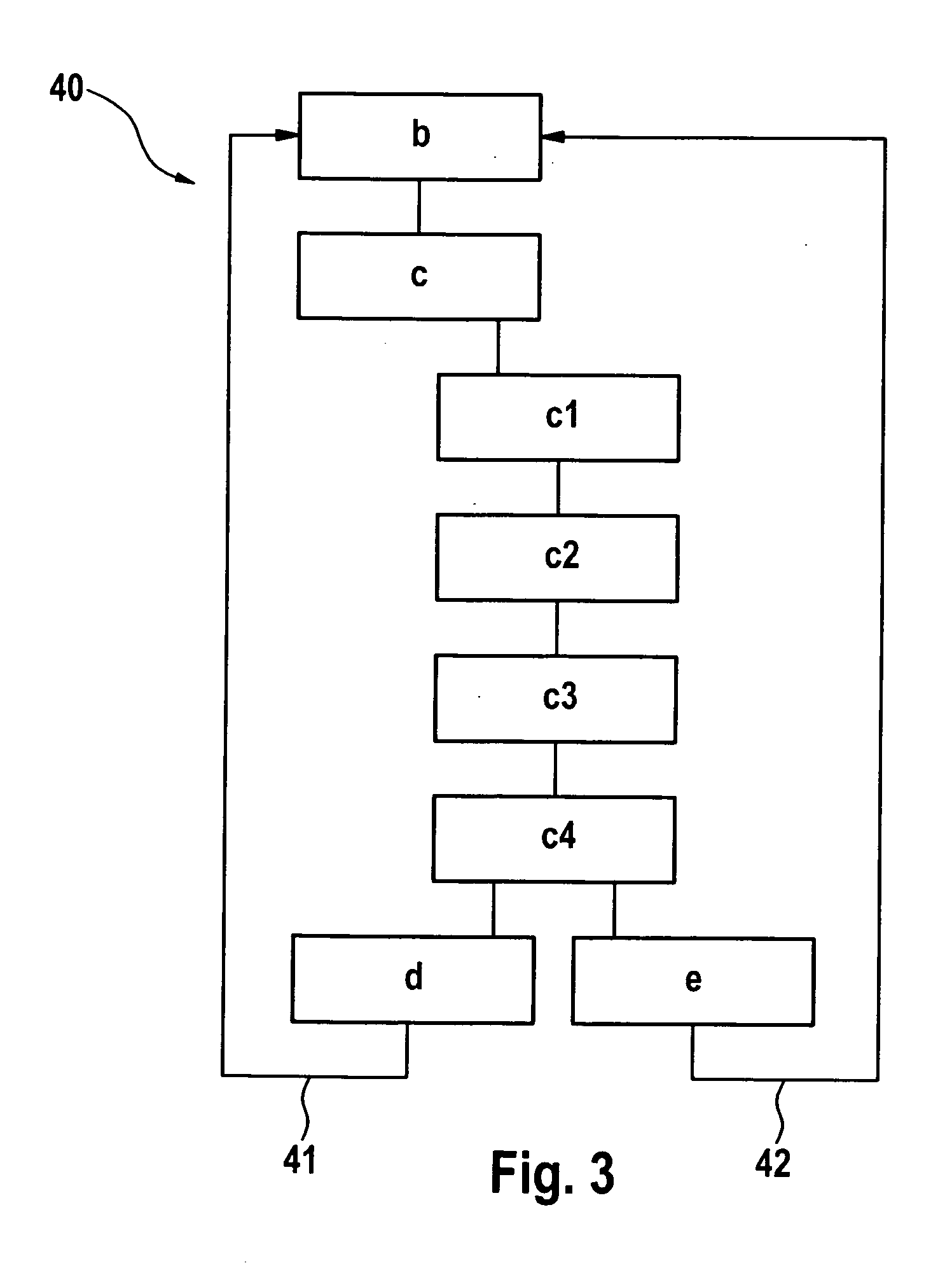Method for self-adjustment of a triaxial acceleration sensor during operation, and sensor system having a three -dimentional acceleration sensor
a triaxial acceleration and sensor system technology, applied in the direction of instruments, liquid/fluent solid measurement, volume measurement, etc., can solve the problem of acceleration interference in calibration, and achieve the effect of ensuring the observability of the sensitivity and offset of the sensor and avoiding a false positiv
- Summary
- Abstract
- Description
- Claims
- Application Information
AI Technical Summary
Benefits of technology
Problems solved by technology
Method used
Image
Examples
Embodiment Construction
[0038]FIG. 1 shows a sensor system 20 according to the present invention, having a three-dimensional acceleration sensor 21, and an external evaluation unit 22 having a computing unit 23 and a memory 24. Computing unit 23 has an estimator 25 which is advantageously implemented as software. Computing unit 23 is able to carry out a calibration of acceleration sensor 21 with the aid of estimator 25, and to carry out testing of a distribution function in real time. Acceleration sensor 21 is represented in three dimensions in its Cartesian coordinate system via axes x, y, z in the measuring directions of the sensor. In a rest state, gravity acts on the sensor in the direction of arrow 26, with the absolute value of 1 g of the gravitational acceleration.
[0039]FIG. 2 shows a sensor system 30 according to the present invention in one specific embodiment as an independent integrated module 31 having a three-dimensional acceleration sensor 32, and an evaluation unit 33, in the form of an ASIC...
PUM
 Login to View More
Login to View More Abstract
Description
Claims
Application Information
 Login to View More
Login to View More - R&D
- Intellectual Property
- Life Sciences
- Materials
- Tech Scout
- Unparalleled Data Quality
- Higher Quality Content
- 60% Fewer Hallucinations
Browse by: Latest US Patents, China's latest patents, Technical Efficacy Thesaurus, Application Domain, Technology Topic, Popular Technical Reports.
© 2025 PatSnap. All rights reserved.Legal|Privacy policy|Modern Slavery Act Transparency Statement|Sitemap|About US| Contact US: help@patsnap.com



